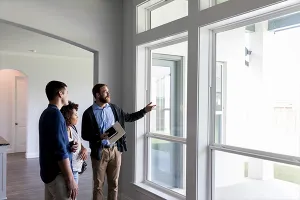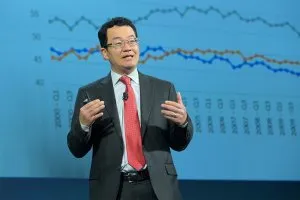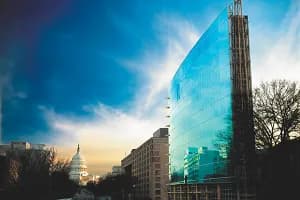“Live, work and play” is the mantra of the smart growth movement. Ft. Lauderdale, with its refreshing Atlantic waters and reputation as a beach and resort area, has no problems living up to the “play” billing.
Completing the trinity, though, is vital for the southeast Florida county. The REALTOR® Association of Greater Ft. Lauderdale (RAGFL) has been using National Association of REALTORS® Smart Growth Action grants to help spread the smart growth word and help sunny South Florida better plan for future growth.
“As time goes on, we are educating the officials of South Florida for the 21st century,” said Adam Sanders, director of government affairs for RAGFL. “We definitely believe our efforts are helping the cause.”
Sanders says now is the time to champion smart growth. Broward County is the second most populated county in the state, and according to the latest Census data, had a population of 1.76 million people in 2009. Yet the county, which touches the Atlantic on the eastern border and the Florida Everglades on its western border, has little space to build out. And redevelopment is a must if the area is going to keep pace with the needs of its residents, visitors and business partners that have located firms and companies there.
The National Association of REALTORS®’ grants have allowed the RAGFL to support a number of initiatives, including hosting a springtime mayoral breakfast that allows an exchange between smart growth advocates and local government officials.
There are 31 different municipalities in Broward County, ranging from ocean front Ft. Lauderdale to suburban Cooper City. Getting the mayors and their staff from all those areas to attend is sometimes easier said than done, Sanders said. “But when we ask, they always come,” he said noting that 27 of the 31 municipalities had representatives at the 2010 breakfast, where about 250 people showed up.
“It really helps to promote open discussion on smart planning,” he said of the event that allows residents to mingle with their local county officials.
Also, the RAGFL, in January, brought in Joe Molinaro with NAR’s smart growth program to speak to its members and community leaders about placemaking and economic development. Meeting in the REALTORS®’ new 10,000-square-foot, 80-percent compliant “green building,” the audience included the mayor of Pembroke Pines, Fran Ortis; Oakland Park Mayor Allegra Murphy; Wilton Manors Mayor Gary Resnick; and Broward County Commissioner Tom Green.
Sanders said the presentation was so well received that even folks who couldn’t make the presentation have been asking for materials. “They heard it was informative and wanted to learn more about how placemaking can create jobs in today’s economy,” he said.
Newly elected Broward County Commissioner Chip LaMarca — who attended the meeting — said it was beneficial.
“It is clear that the incorporation of smart growth principles is crucial to the future vitality of my community, both in terms of livability and economic development,” he said.
Sanders said the RAGFL has “made it its mission to educate local elected and planning officials” about smart growth. To help achieve those goals, the RAGFL also has partnered with the Smart Growth Partnership (SGP) in southeast Florida. Sanders has served on the Smart Growth Partnership Board of Directors since its inception in 2005.
SGP founder Gloria Katz said the RAGFL has helped her group with several initiatives. Katz said the goal of the group is to make Broward County residents comfortable in their spaces and places and confident that the area is a place where they can work and play and raise a family. The goal is to make sure people understand it’s more than just a sunny, playground.
“I think the REALTORS® can help in making that a reality,” she said. “We have similar efforts.”
SGP is now focusing its efforts on implementing a “Complete Streets” policy that would ensure transportation planners and engineers design roadways with all users in mind when they plan roads, from bicyclists to mass transportation users and pedestrians.
The Complete Streets approach in planning is championed by the not-for-profit National Complete Streets Coalition. The movement, which is supported by REALTORS®, is growing exponentially. There were 80 Complete Streets policies approved in 2010, said Stefanie Seskin, state and local policy manager for the national coalition. That’s a 100-percent increase from the number of policies approved the year before, and quadruple the number of policies that were approved in 2008.
The National Complete Streets Coalition has identified 10 elements to the Complete Streets policy, which include applying the standards to all agencies — state, county and local — and on all roads. Complete Streets policies are applied to all projects, from new roads to retrofit projects.
If successful with its Complete Streets campaign, Broward County would join a handful of other Florida locations that have taken the plunge, which, according to Seskin, include the city of Miami, West Palm Beach, Pensacola and Lee County.
A central theme of the Complete Streets movement is accessibility for all users. Seskin said the focus is on making the transportation system “work better for everyone who needs to be there.”
RAGFL and SGP are in the early stages of working with the Broward Metropolitan Planning Organization to discuss incorporating the principles into road projects there. Sanders said Pompano Beach and Hollywood are areas that he thinks would benefit from this style of thinking.
“Well designed universally accessible streets,” Sanders said, “are necessary to a safe, equitable and prosperous community.”








